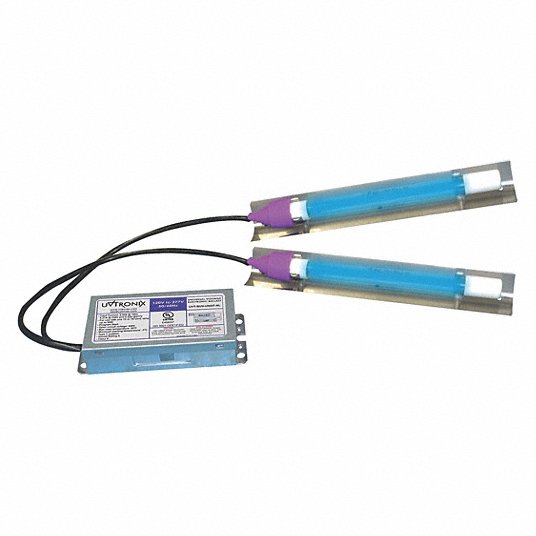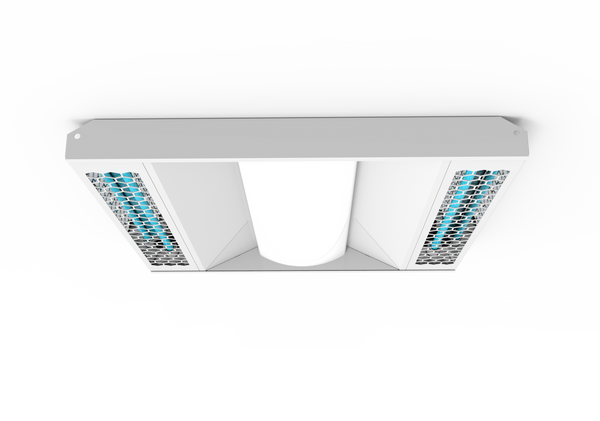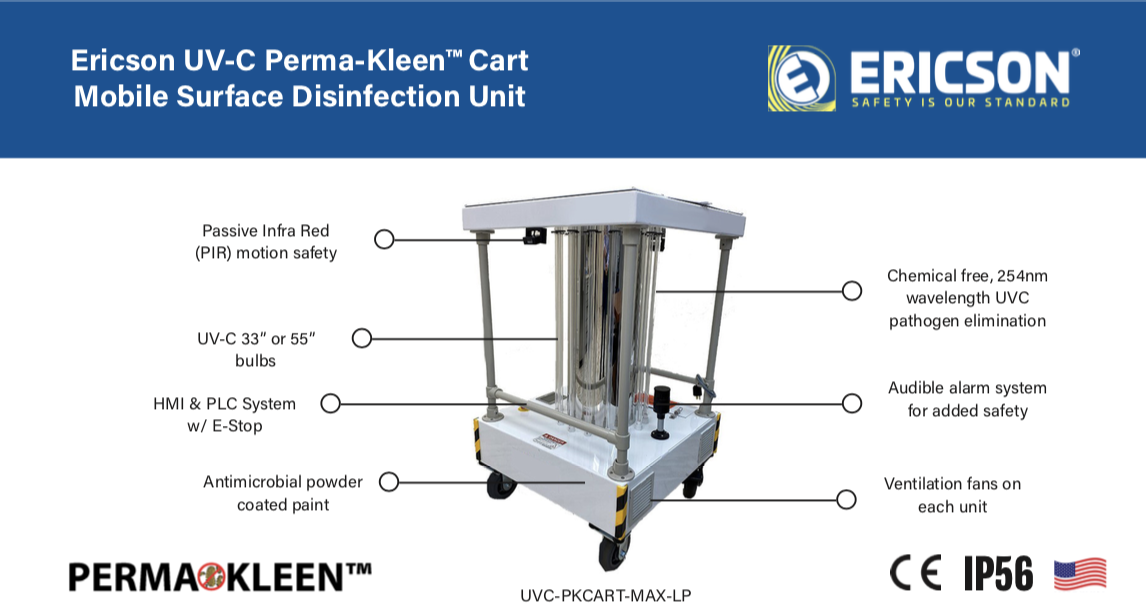Harnessing the Power of UV Surface Disinfection: A Comprehensive Guide for Healthier Spaces
Harnessing the Power of UV Surface Disinfection: A Comprehensive Guide for Healthier Spaces
Blog Article
UV Disinfection: The Cutting-Edge Innovation Changing Hygiene Practices
In the realm of cleanliness methods, one innovation has become a game-changer: UV sanitation. With its capability to remove unsafe pathogens, this sophisticated modern technology is revolutionizing the way we come close to cleanliness and hygiene. How does UV disinfection work, and what are the advantages it supplies? From medical care settings to food processing, UV disinfection is making its mark in different sectors. In this conversation, we will certainly explore the intricacies of this transformative innovation and look ahead to its encouraging future.
Just How UV Disinfection Functions
UV sanitation functions by utilizing ultraviolet light to ruin or inactivate bacteria, offering a very reliable and chemical-free approach of cleanliness. This modern technology uses the power of short-wavelength UV-C light, which is capable of harming the DNA and RNA of bacteria, hence making them not able to duplicate and trigger damage.
The process starts with the installment of UV disinfection systems, which consist of UV lamps that produce UV-C light. These lamps are purposefully put in locations where microbial contamination is an issue, such as water therapy plants, hospitals, labs, and food handling facilities.
When microbes are subjected to UV-C light, the photons penetrate their cell walls and reach the DNA and RNA within. The high-energy UV-C photons interfere with the hereditary material by producing bonds between nearby nucleotides, resulting in the formation of thymine dimers. These dimers protect against the microorganisms from replicating, rendering them harmless.
UV disinfection is extremely effective against a wide variety of bacteria, consisting of infections, germs, and parasites. It is particularly efficient against waterborne microorganisms like E. coli, Giardia, and Cryptosporidium. Furthermore, UV disinfection is a chemical-free technique, getting rid of the need for potentially unsafe anti-bacterials and lowering the risk of hazardous disinfection by-products.
Benefits of UV Disinfection
UV disinfection provides numerous benefits in the area of sanitation, making it a highly favored approach for successfully eliminating dangerous bacteria. One of the essential benefits of UV sanitation is its capability to give a chemical-free remedy. Unlike standard disinfection methods that count on chemicals, UV disinfection makes use of ultraviolet light to ruin the DNA of microorganisms, making them unable to duplicate and cause infections. This not only removes the requirement for potentially hazardous chemicals however also lowers the danger of chemical residue on surfaces.

UV sanitation is also highly versatile in its applications. It can be utilized in different settings, including healthcare facilities, schools, food processing facilities, and water treatment plants. UV disinfection systems can be quickly incorporated right into existing sanitation practices, offering an extra layer of defense against transmittable conditions.
Along with its effectiveness and flexibility, UV sanitation is likewise eco friendly. It does not create any harmful by-products or deposits, making it a safe and sustainable approach for hygiene - uv surface disinfection. In addition, UV sanitation needs very little maintenance and has a lengthy life-span, causing expense savings in the future.
UV Sanitation in Healthcare Setups
In medical care setups, UV disinfection has emerged as a cutting-edge technique for effectively getting rid of hazardous microbes. UV disinfection functions by releasing ultraviolet light at a specific wavelength that is deadly to bacteria, infections, and other microorganisms.
First of all, UV sanitation is a non-chemical method, making it an eco-friendly choice compared to standard sanitation approaches that usually involve the usage of severe chemicals. The usage of UV light removes the demand for chemical anti-bacterials, minimizing the threat of harmful residue or chemical direct exposure to both people and healthcare workers.
In addition, UV sanitation is highly efficient in eliminating a large range of microorganisms, including drug-resistant germs such as MRSA and C. difficile. It supplies a regular and reputable sanitation procedure, making certain that all surfaces and devices are my latest blog post completely decontaminated, also in hard-to-reach areas.

UV Sanitation in Food Handling
The application of UV disinfection expands past health care settings and finds substantial worth in the realm of food handling. uv surface disinfection. UV disinfection modern technology is coming to be progressively popular in the food sector because of its ability to efficiently remove harmful virus and improve food safety
Among the main benefits of UV sanitation in food handling is its ability to target a wide variety of microbes, consisting of viruses, germs, and mold and mildews. By using UV light at certain wavelengths, it is feasible to interfere with the DNA and RNA of these pathogens, rendering them unable to cause or replicate injury. This technology can be applied to different stages of the food processing chain, including surface sanitation, tools sanitation, and water therapy.
UV sanitation gives a non-thermal and chemical-free approach of disinfecting food. Unlike conventional disinfection approaches that count on chemicals or warmth, UV modern technology does not leave any type of residue or alter the taste, appearance, or dietary value of the food. This makes it a perfect option for markets that need strict adherence to quality criteria.
In addition, UV sanitation systems are very easy to run and install, requiring marginal upkeep. They can be integrated right into existing handling lines without creating substantial disturbances to the manufacturing procedure. Furthermore, UV systems have a quick treatment time, enabling constant handling and minimizing downtime.
The Future of UV Sanitation

One area where UV disinfection is expected to make considerable innovations remains in the field of healthcare. With the rise of antibiotic-resistant bacteria and the requirement for a lot more reliable sanitation approaches, UV light has the possible to play a critical role in reducing healthcare-associated infections. UV disinfection systems can be used to decontaminate surfaces, equipment, and even the air in healthcare facilities, helping to avoid the spread of dangerous pathogens and improve individual safety and security.
Another market that could take advantage of innovations in UV sanitation technology is the food industry. UV light has currently verified to be an effective technique for sanitizing food and decreasing the danger of foodborne ailments. As modern technology boosts, we can anticipate to see a lot more cost-effective and reliable UV sanitation systems being executed in food handling plants, making sure that the food we take in is safe and without harmful microorganisms.
Final Thought
To conclude, UV sanitation is an innovative innovation that is transforming hygiene practices in medical care setups and food processing. By using UV light to eliminate or shut off microorganisms, it supplies many benefits such as security, effectiveness, and performance. With continuous developments check it out in this field, UV sanitation holds excellent prospective for the future of hygiene, providing a lasting and trusted option for preserving clean and hygienic settings.
UV disinfection is a chemical-free technique, eliminating the requirement for possibly hazardous anti-bacterials and decreasing the danger of harmful disinfection byproducts.
Unlike typical disinfection techniques that rely on chemicals, UV disinfection utilizes ultraviolet light to destroy the DNA of microorganisms, making them unable to duplicate and create infections. Unlike typical sanitation techniques that rely on chemicals or warmth, UV innovation does not leave any kind of residue or modify the taste, appearance, or nutritional worth of the food. As modern technology improves, we can anticipate to see much more cost-efficient and efficient UV disinfection systems being executed in Continued food processing plants, making certain that the food we eat is secure and cost-free from dangerous bacteria.
In verdict, UV sanitation is an advanced technology that is transforming sanitation techniques in medical care setups and food handling.
Report this page